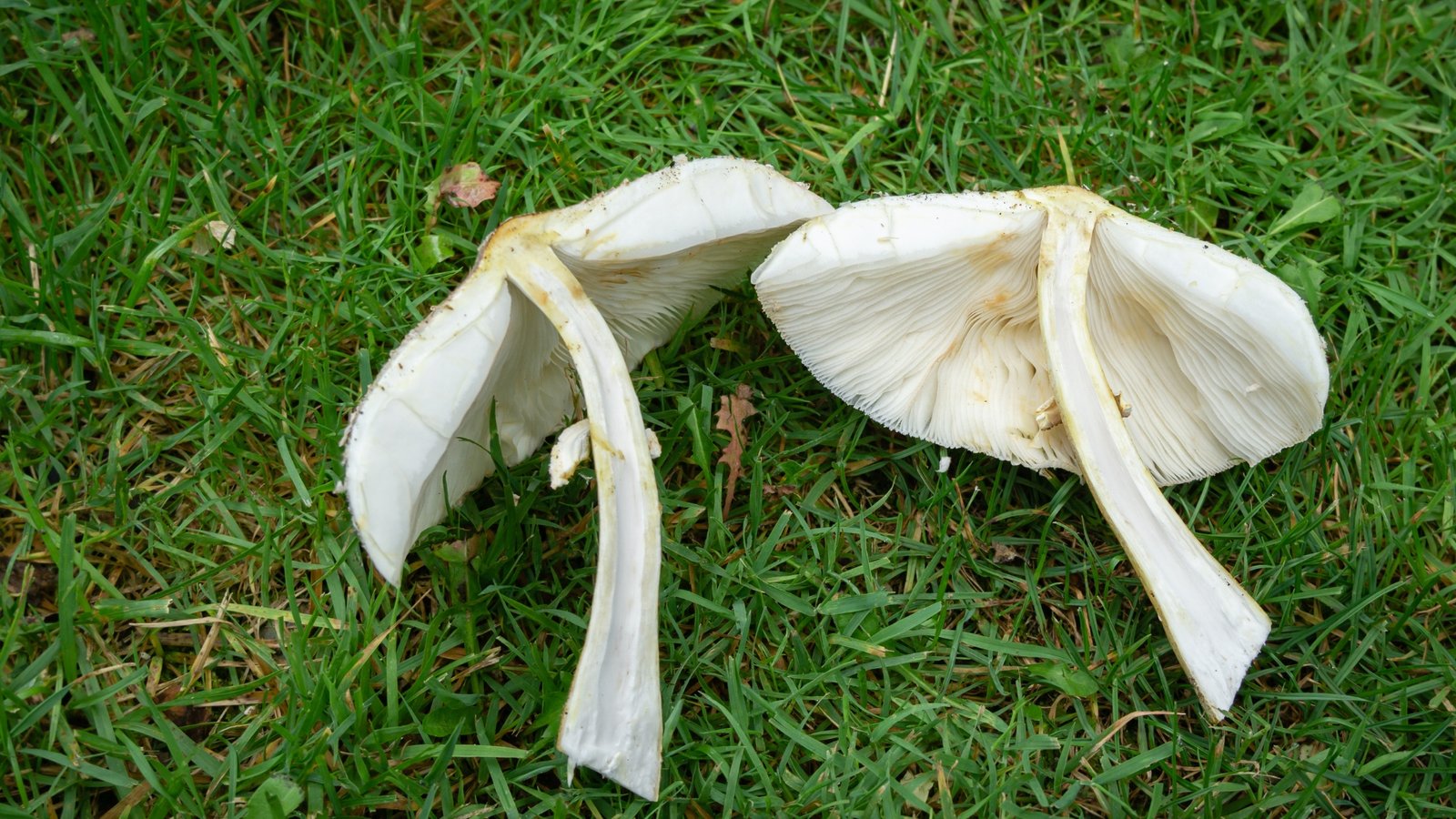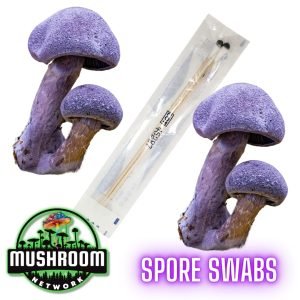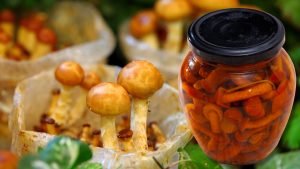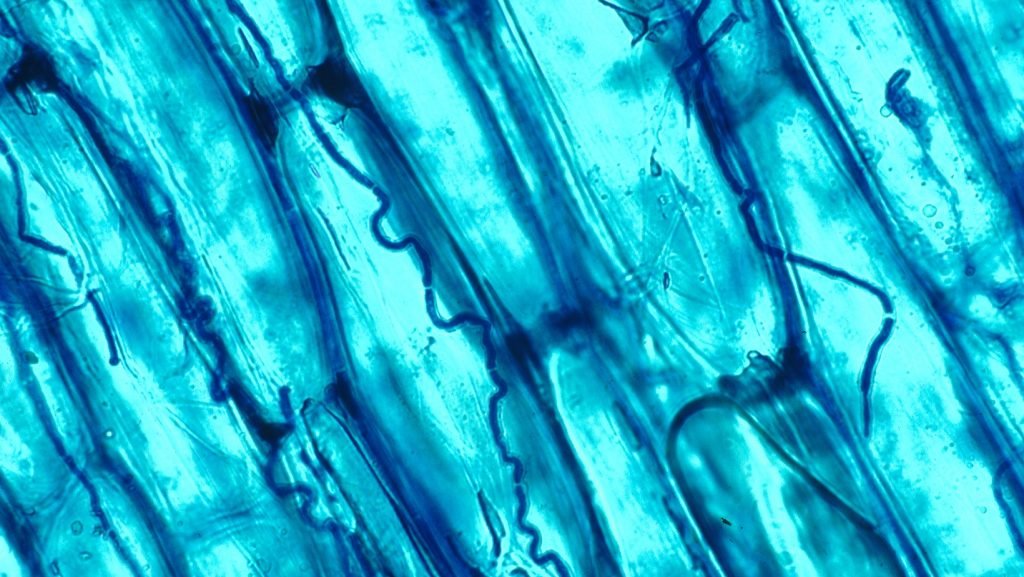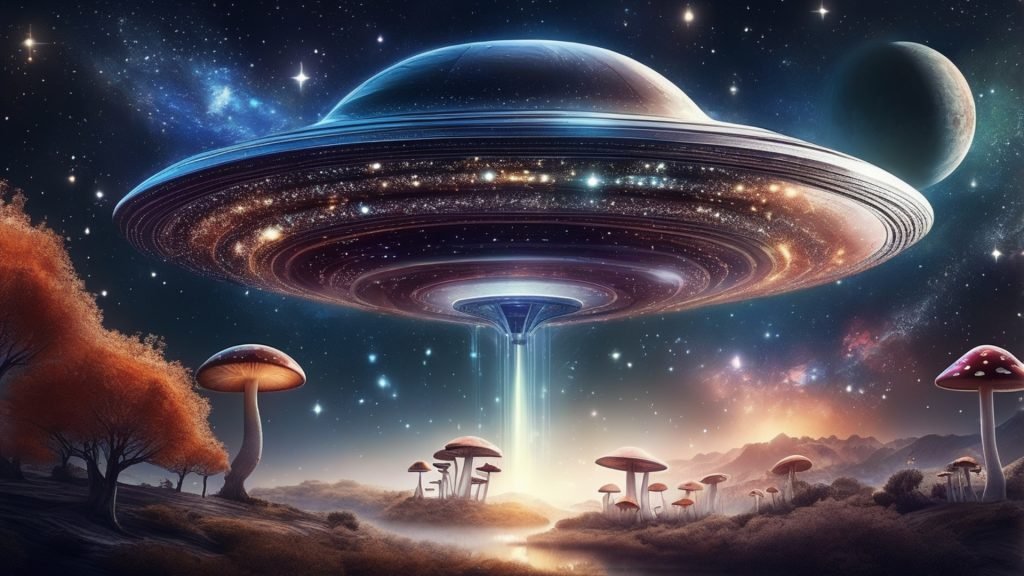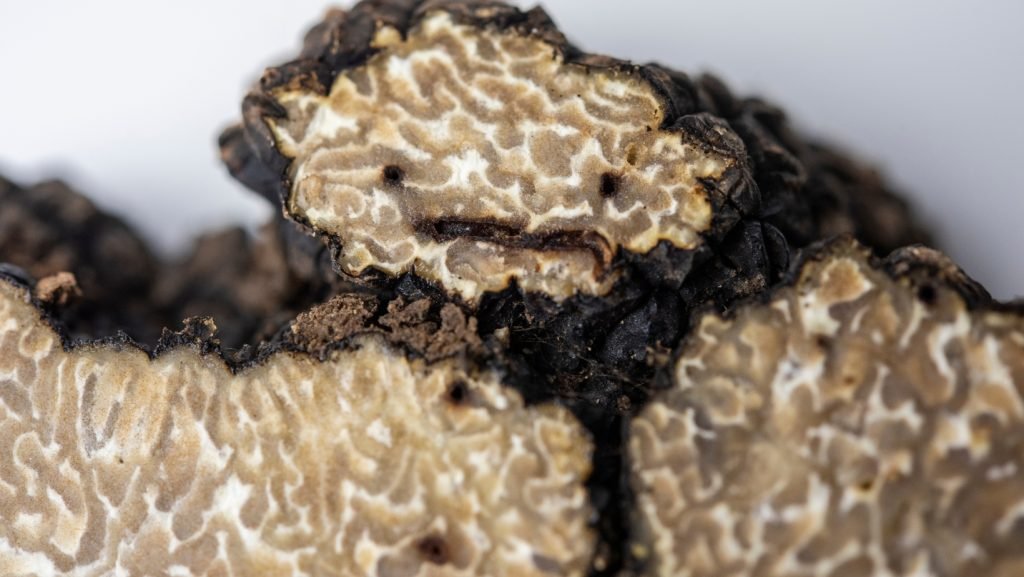Buckle up, my mycophile buddies! We’re about to embark on a fungal fable of doppelgangers and deadly delights. Meet Chlorophyllum Molybdites, the mushroom that’s as green as Shrek but far less lovable. In this article, we’ll explore why this seemingly enchanting cap is anything but a fairy tale find. Get ready for a whimsical yet scholarly dive into this deceptive green monster.
The tale of Chlorophyllum Molybdites is one of confusion, gastrointestinal distress, and molecular masquerading. This is the mushroom that shows up to the party, and everyone thinks they know, but it’s actually carrying a punch that packs a wallop. You might spot it on your foraging ventures and think, “Ooo, exotic!”— but beware; not everything that glitters (or in this case, gleams green) is gold.
A member of the Agaricaceae family, this fungus frequently causes misidentification mishaps. It looks disarmingly like a couple of edible fungi, making it a poster-child for why genetic understanding is crucial in mycology.
From DNA fingerprinting to cellular structures, this article will pull back the cap on Chlorophyllum Molybdites to expose its enigmatic core. We’ll tickle the lines of genomes and dance with biochemistry to get you up close and personal with this specimen.
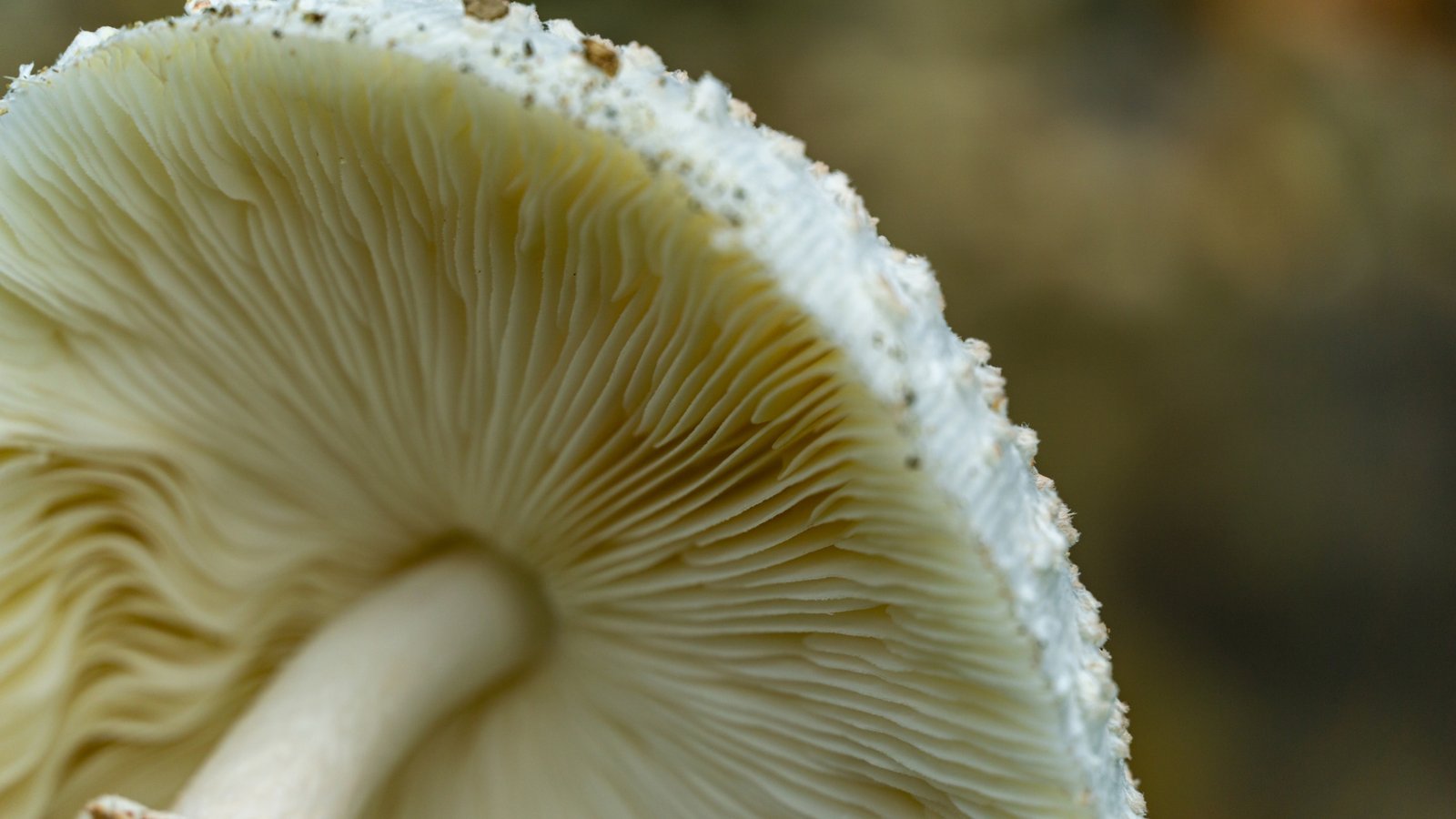
Green Illusions: More Than Meets the Eye:
Ah, the scenic green hue of Chlorophyllum Molybdites, the imposter in the mushroom kingdom. This tricky fungus employs visual mimicry as a survival strategy. It resembles other edible species like Chlorophyllum Rhacodes or Leucoagaricus Americanus, often leading to unfortunate culinary experiments. A 2016 study even reported a surge in accidental ingestions, notably in regions with high biodiversity of mushroom species (Bick, D., & Smith, M. E., 2016).
Let’s not be hasty and blame the mushroom entirely; it’s just a byproduct of evolutionary mechanisms that favor those traits. While it’s not screaming, “Eat me! I’m delicious!” it’s certainly not wearing a warning sign either. The mushroom’s captivating color serves as a visual cue for animals and humans alike, attracting us with the implicit promise of exoticism.
Interestingly, the green pigment isn’t just for show. It’s linked to biochemical properties and might even have a role in the complex symbiotic relationships fungi forge with their environment. These hues can signal where these fungi fit in the broader mycelial web, offering clues to their ecological roles.
Ever heard of the term “molecular clock“? Genomic studies indicate that Chlorophyllum Molybdites diverged from its edible cousins roughly 100 million years ago. That’s right, this bad boy is like the dinosaur of the mushroom world. Well, maybe not that ancient, but it has been around long enough to warrant serious study.

The Gastronomic Gambit: A Risky Feast:
So what happens when you mistake this shifty green cap for its edible counterparts? A lot of regret, mostly in the form of gastrointestinal troubles. Chlorophyllum Molybdites contains certain types of toxic proteins and peptides, such as molybdophyllysin, which induce severe symptoms upon ingestion.
Some cases might involve nausea, vomiting, and abdominal pain; others might escalate to include unpleasant hallucinations or diarrhea. Ironically, these toxins aren’t completely bad news. Medical research is exploring how some of these compounds could serve in future pharmacological applications.
Let’s take a moment to admire this mushroom’s impressive level of deceit. It’s not enough that it looks like a wholesome, edible mushroom; it had to double down and include a built-in defense mechanism. This is the Swiss Army Knife of the fungal world, loaded with tools designed for survival.
Remember our friend molybdophyllysin? Studies show that this toxin may actually have antibacterial properties. Now that’s a double-edged sword if ever there was one! However, before you get any bright ideas, let me remind you that eating this mushroom is still a very bad idea.
The complexity of Chlorophyllum Molybdites goes further than just external appearances and gastrointestinal games. Its genome sequence is a labyrinth of information waiting to be mapped. Genomic sequencing could pave the way for identifying bioactive compounds and understanding their function at a molecular level.
The universe of mushrooms is expansive, each variant bearing its own unique charm and characteristics. The Marketplace on the 🍄 Mushroom Network is a testament to this diversity. It is a haven for those seeking a deeper understanding of the magical world of mushrooms. If you’re keen on learning more about this type of mushroom and other mushroom variants, this Marketplace is your ultimate resource.
Woah there, eager beaver! 🦫 The 🍄 Mushroom Network’s Marketplace is a smorgasbord of mycological marvels, but it’s VIP access only! 🔐 Log In or Become a Myco-Patron (Yup, still FREE!) to see what all the fuss is about. Trust us, you’ll want in on these shroomy shenanigans! 🍄🎉

The Mycelial Enigma: Understanding Through Genomics:
Alright, science geeks, this section is where we wear our lab coats and safety goggles. Genomic studies are helping us decode Chlorophyllum Molybdites one nucleotide at a time. Early results indicate a genome size of approximately 60 megabases, a bit larger than the human immunodeficiency virus but much smaller than Homo sapiens. But it’s not about size; it’s about complexity, right?
Genomic mapping has unveiled clusters of genes responsible for secondary metabolite production, including the notorious toxins. This opens up pathways for future research on how these secondary metabolites are synthesized, regulated, and deployed.
Furthermore, genomic research provides comparative insights. By comparing Chlorophyllum Molybdites with other fungi, we gain a better understanding of its evolutionary trajectory. Did you know its closest relatives are not even green? That’s right; this is a rebellious teenager in the family of Agaricaceae.
Through comparative genomics, we might even uncover new evolutionary pathways, a bit like tracing your ancestry and finding out you’re distantly related to royalty. Only in this case, our royalty might be an ancient fungus that figured out how to survive in extreme environments.
Genomic advancements also have broader implications for fungal conservation. As we better understand the role of Chlorophyllum Molybdites in ecosystems, we can make more informed decisions about fungal conservation. It’s all part of a much larger puzzle where every piece matters.
Not sure where to start? The 🍄 Mushroom Academy offers a wide range of courses tailored to your needs. Whether you’re a beginner eager to learn or an experienced mycologist looking to broaden your knowledge, the 🍄 Academy has something for everyone.

A Fungal Farewell: The Last Spore:
So there we have it, the intricate, perplexing, and absolutely fascinating world of Chlorophyllum Molybdites—a mushroom that’s full of surprises and arguably a master of deception. While its green allure might tempt you, remember that beauty is only cap deep. This fungal tale reminds us of the need for rigorous genomic studies in mycology, which can illuminate the complexities inherent in the fungal kingdom.
As you continue your mycological adventures, let this be a cautionary tale. Not all that glitters is gold, and not all that’s green is good to eat. But hey, what’s life without a little mystery, a dash of danger, and a sprinkle of spores?
Love what you’re reading? Make it FBO (Facebook Official) with us! 🤘🏼 Hit that subscribe button on YouTube, follow our Facebook Page, join our FB Group – Wood Wide Web, and chirp along with us on Twitter/X. While you’re at it, peep into the 🍄 Mushroom Network’s Marketplace—where our Network shelves change faster than a Pink Oyster (Pleurotus Djamor) pins!
Recommended Reads:
Blue Meanies (Panaeolus Copelandia Cyanescens)
Welcome, fellow mycophiles and curious minds, to the enchanting world of Blue Meanies! As we...
Read More...Substrate for Mycology: A Comprehensive Guide on Using Coffee Grounds
Ever thought your morning coffee could fuel more than just your day? Brew a fresh...
Read More...Nameko: Health and Healing: The Medicinal Potential of Nameko Mushrooms
When it comes to the spectrum of medicinal mushrooms, Nameko holds a distinctive place. Treasured...
Read More...The Royal Healer: Medicinal Benefits of King Oyster Mushrooms
The Royal Healer: Medicinal Benefits of King Oyster Mushrooms unfolds the intriguing tale of this majestic...
Read More...Whoa there, Spore Sport! 🍄 Looks like you’re not logged in yet. Don’t you know what you’re missing? MYCO-CREDITS! Imagine all the fungal fun you could have. It’s like finding a Morel in May and not picking it. Tragic, right? Log In or Become a Myco-Patron and start racking up those credits. It’s more rewarding than finding a mushroom in your backyard! 🌟🏡

